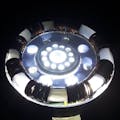So, previously I wrote about the SPI connection between TFT LCD and STM32 Discovery Board here: https://www.hackster.io/greatbim/stm32-tft-lcd-display-2-8-tutorial-fd3e06. Since then, I had always wanted to finish a series about Hoe to use the peripherals on that Discovery Board. And here it is.
This is my take on the introduction to the STM32, a powerful 32-bit microcontroller that is based on the ARM Cortex™-M3 processor. This series will focus on the communication protocols that you properly need to use when using STM32.
Personally, I had never worked with this microcontroller until I had my first job. I did quite a lot of research in order to keep up with my projects. And that is why I decided to write this blog: to document what I have learned and hope that someone might find it useful when they want to learn about the applications of STM32.
For this to work, you should have basic knowledge about electronics and C programming. This will not be a step-by-step guide from the beginning to the end, I mean, there are plenty of posts about how to start writing a simple program for STM32 and they are way more details.
This project is by no means perfect. There are still plenty of bugs in the code and some features are not running properly. You can download my code from GitHub and run it with the System Workbench for STM32 for demonstration.
The list consists of 5 posts:
- [Tutorial][STM32] STM32 Peripherals: UART – Debugging
- [Tutorial][STM32] STM32 Peripherals: SPI – TFT LCD Display 2.8″
- [Tutorial][STM32] STM32 Peripherals: I2C – Accelerometer & Magnetometer LSM303DLHC
- [Tutorial][STM32] STM32 Peripherals: USB – Audio
- [Tutorial][STM32] STM32 Peripherals Bonus: u-blox GPS module
Sourcecode: https://github.com/dtnghia2206/STM32_Peripherals
Video:
![[Tutorial][STM32] STM32 Peripherals: Introduction](https://prod.hackster-cdn.online/assets/transparent-a0c1e3063bcabc548a5f3fa7328f3c1c97f747e6e764da4c14439567baa79ae1.gif)


![[Tutorial][STM32] STM32 Peripherals: Introduction](https://hackster.imgix.net/uploads/attachments/1049812/_uyiroTeA6g.blob?auto=compress%2Cformat&w=900&h=675&fit=min)



Comments
Please log in or sign up to comment.